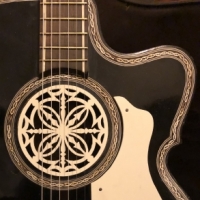DjangoBooks.com
Welcome to our Community!
This Week's Leaders
 Buco 19 Points
Buco 19 Points TonyRees 16 Points
TonyRees 16 Points Normandie14 14 Points
Normandie14 14 Points AndyW 14 Points
AndyW 14 Points Scoredog 12 Points
Scoredog 12 Points
All Time Leaders
 Buco 11012 Points
Buco 11012 Points wim 5249 Points
wim 5249 Points billyshakes 4928 Points
billyshakes 4928 Points MichaelHorowitz 3838 Points
MichaelHorowitz 3838 Pointsdennis 3320 Points
Recent Activity
Activity List
-
Hi Tony
I have just opened up your recordings for WASO at the Sevenoaks concert 1982....I'm still under a Gypsy spell.!!
This is an amazing find and you are to be congratulated on the quality and foresight to make this possible.
How did you get such high quality in 1982??....no iphones then! The atmosphere in that Club must have been electrifying, smokey and inspirational to all Django/ Gypsy Jazz fans.
Even more exciting for me, is that my Dad was at that event for his 60 th birthday! My family lived in Sevenoaks for over 45 years. I also have signed copies from my Dad, of Fapy and the band of the WASO " Gypsy Swing " 33 LP and his CD " Swing Guitars". These are remarkable quality recodings , and now coupled with your concert, I am totally in Gypsy paradise !
Now retired, I aspire to just being a competent rhthym player, and having fun with my geriatric GJ friends. Fortunately there are a good availability of such musicians in Portland OR...including my friend and member here Phil Lavine who found your posting..
Keep in touch...and THANKS again for this wonderful golden nugget of the WASO Concert.
Cheers...David
December 16 -
-
smitchr earned the Photogenic badge.Little things like uploading a profile picture make the community a better place. Thanks!December 14
-
-
smitchr earned the First Comment badge.Commenting is the best way to get involved. Jump into the fray!December 14
-
fabrix earned the Ancient Membership badge.Nobody remembers a time when this person wasn’t a member here.December 13
-
-
-
-
-
-
tobolek earned the Ancient Membership badge.Nobody remembers a time when this person wasn’t a member here.December 13
-
-
-
-
Brunerd1489 earned the Eight Anniversary badge.Thanks for sticking with us for 8 years.December 13
-
-
-
-
-
-
rcjpisani earned the First Anniversary badge.Thanks for sticking with us for a full year.December 12
-
drewski earned the Ancient Membership badge.Nobody remembers a time when this person wasn’t a member here.December 11
-
-
-
-
-
-
-























